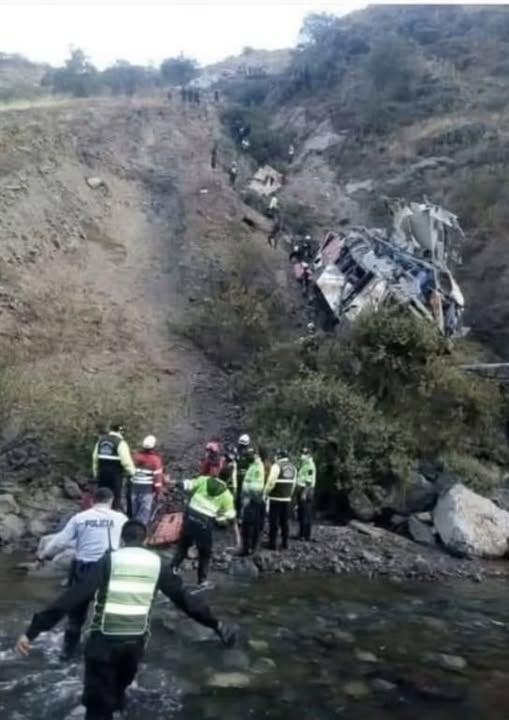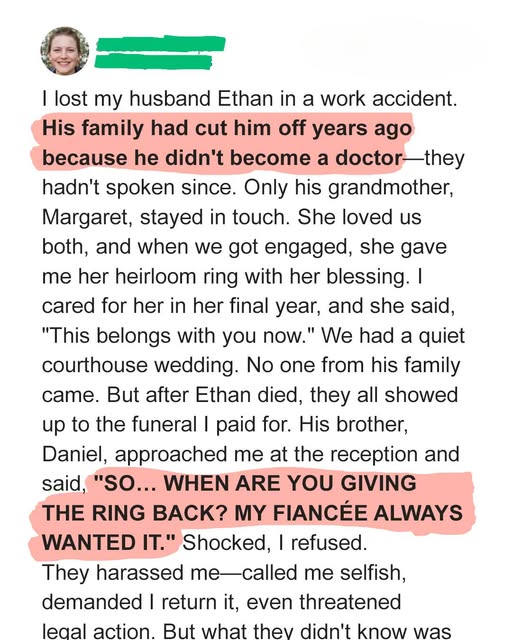A devastating tragedy struck Bolivia on February 17, 2025, when a passenger bus plunged nearly 2,600 feet into a deep ravine in the mountainous district of Yocalla, leaving at least 28 people dead and 14 others injured. Among the injured were four children, two of whom remain in critical condition as rescue teams continue to battle time and terrain to save lives.
The bus, which had been traveling along one of Bolivia’s notoriously dangerous mountain routes, was carrying passengers from Potosí to Sucre when disaster struck. According to early reports from local authorities, the driver may have been traveling at excessive speed while navigating a series of sharp turns on a winding road carved into the side of the Andes. Witnesses said the vehicle appeared to lose control before veering off the edge, tumbling hundreds of meters into a steep abyss.
By the time emergency responders arrived, the wreckage was scattered across a rocky slope, with metal twisted beyond recognition. Paramedics, firefighters, and local volunteers worked through the night to extract survivors and recover the bodies of the deceased. Images shared from the scene painted a grim picture — rescuers descending with ropes, flashlights cutting through the mist, and the sound of sirens echoing across the valley.
“This is one of the most catastrophic accidents we’ve seen in recent years,” said a spokesperson for Bolivia’s national police. “The terrain made rescue efforts extremely difficult. We’re still working to identify several victims who were thrown from the vehicle.”
The accident has quickly become Bolivia’s deadliest road tragedy of 2025, reigniting long-standing debates about road safety, driver training, and the country’s deteriorating transport infrastructure. In a country where mountain roads often wind along cliffs with little to no guardrails, such accidents are tragically frequent. Each year, hundreds lose their lives to preventable collisions, often caused by reckless driving, vehicle neglect, or poorly maintained roads.
Authorities believe that a combination of excessive speed and mechanical failure may have played a role in the Yocalla crash. The bus company involved, whose name has not yet been publicly released, is now under investigation. Officials have ordered a full inspection of its fleet and records, including maintenance logs and driver certifications.
President Luis Arce expressed his condolences to the victims’ families and called for immediate reforms to improve road safety nationwide. “This tragedy must not be repeated,” he said in a statement. “We will strengthen transportation oversight, enforce stricter regulations on long-distance travel, and ensure that every vehicle on our roads meets safety standards.”
For residents of Yocalla and the surrounding regions, the accident has reopened old wounds. This stretch of road, part of the route connecting Potosí to Sucre, has long been considered one of the most perilous in the country. Despite warning signs and past incidents, little has been done to modernize or secure it. Local drivers call it “El Camino de la Muerte” — the Road of Death — a grim nickname that reflects both its geography and history.
As rescue workers combed through the wreckage, the human toll became heartbreakingly clear. Families gathered at nearby hospitals, desperate for news of their loved ones. In Potosí, makeshift tents were set up outside medical centers to accommodate the influx of relatives. “We heard there were survivors,” said one man waiting outside the emergency ward. “My sister was on that bus. I just want to know if she’s alive.”
The survivors who have spoken to reporters described scenes of chaos and terror. One passenger, a 32-year-old woman named Mariela, said she had dozed off moments before the crash. “I woke up when people started screaming,” she recalled from her hospital bed. “The bus was shaking, and then everything went black. When I opened my eyes, I was outside, lying on rocks. I don’t know how I survived.”
Another survivor said the driver appeared to be struggling with the steering wheel moments before the fall. “He tried to brake, but nothing happened,” the man said. “We were going too fast.”
Medical teams have confirmed that several of the injured suffered severe fractures, internal bleeding, and head trauma. Two children are currently fighting for their lives in intensive care. Doctors have called for urgent blood donations, and volunteers from nearby towns have lined up to help.
This tragedy is far from an isolated incident. Bolivia ranks among South America’s most dangerous countries for road travel. According to government statistics, more than 1,000 people die annually in traffic-related accidents, with many more injured. The causes vary — from speeding and fatigue to overloaded vehicles and treacherous conditions in rural areas. In mountain regions, where unpaved roads hug cliffsides and visibility can vanish in seconds due to fog or rain, even the smallest error can prove fatal.
Experts argue that the problem goes beyond individual recklessness — it’s systemic. Many roads lack proper signage or barriers. Vehicles often operate with outdated parts, and inspections are inconsistently enforced. Moreover, some drivers work punishingly long hours, increasing the risk of fatigue-induced mistakes.
Transportation safety advocates have long pushed for reforms, including mandatory rest periods for long-distance drivers, stricter enforcement of vehicle inspections, and the installation of safety infrastructure such as guardrails and warning systems on high-risk roads. However, progress has been slow due to funding shortages and bureaucratic hurdles.
In the aftermath of the Yocalla tragedy, the government has pledged to accelerate those changes. Officials have announced plans to deploy new technology for monitoring vehicle speed, increase patrol presence along mountain routes, and invest in safer road design. Whether these promises translate into real change remains to be seen.
For now, the nation mourns. Vigils have been held in Potosí, Sucre, and La Paz, with citizens lighting candles for the victims. In small towns along the route, church bells rang in memory of those lost. “We travel these roads every day,” said a local shopkeeper. “We all know someone who’s died on them. It’s time something changes.”
As dawn broke over the mountains, the wreckage was finally cleared. Twisted steel and shattered glass were loaded onto trucks, leaving behind scars on the earth — and on the hearts of the families who lost so much.
What remains is a familiar call to action, one Bolivia has heard too many times before. The Yocalla crash is a stark reminder of the country’s fragile transportation network, its dangerous roads, and the human cost of inaction. Behind every headline and statistic are lives cut short — mothers, fathers, children — all victims of a tragedy that could, and should, have been prevented.
For those left behind, grief now mingles with anger. They demand accountability, not sympathy; solutions, not statements. As Bolivia buries its dead, the question lingers in the thin mountain air: how many more lives must be lost before the country finally takes road safety seriously?


